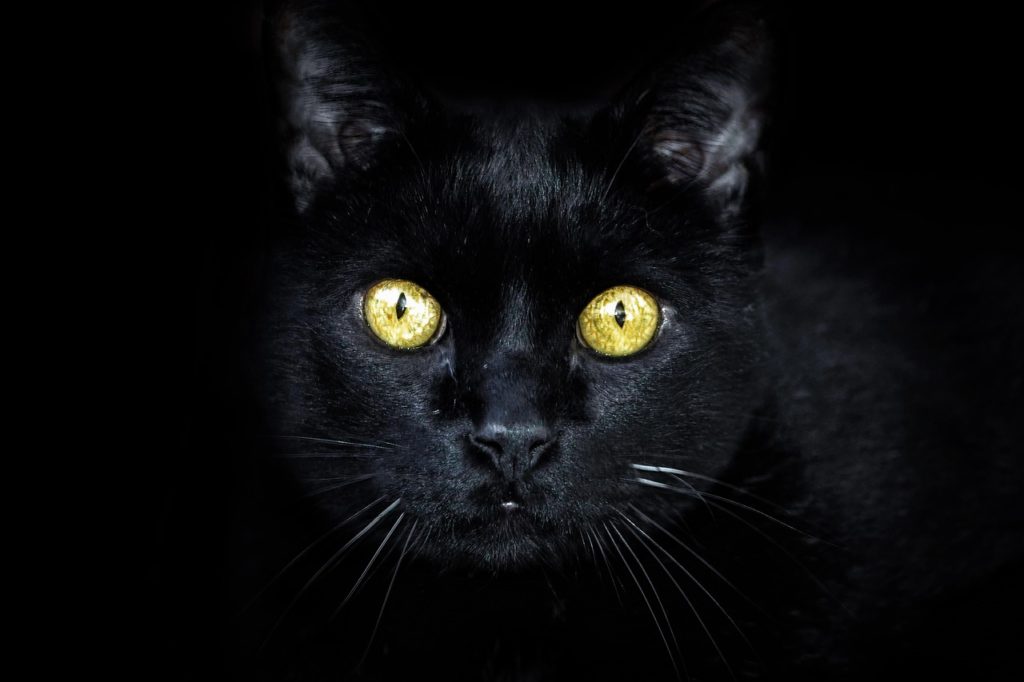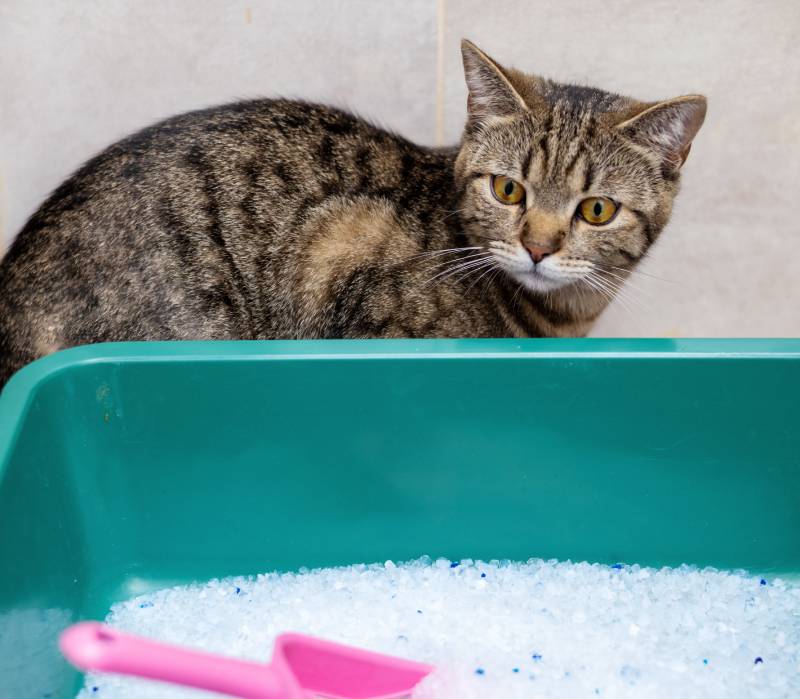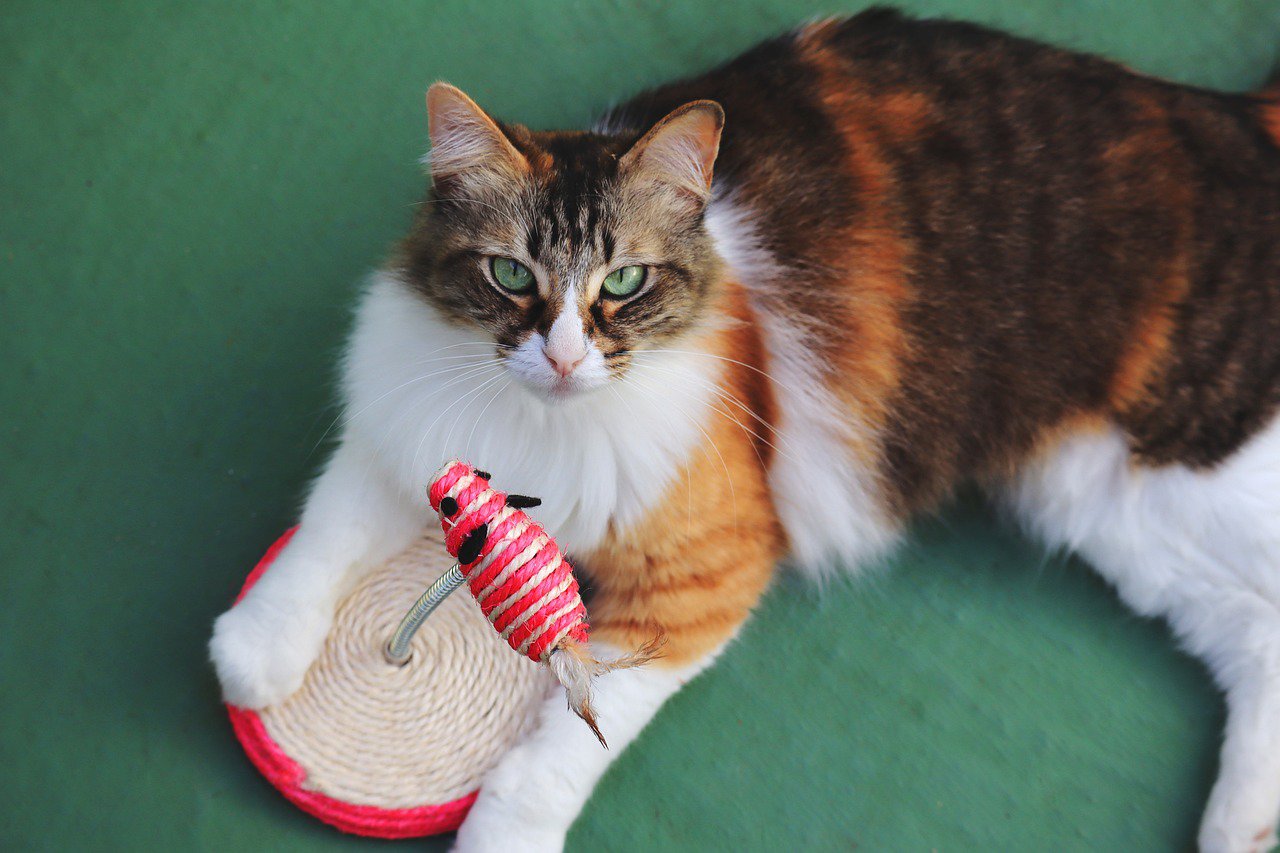Click to Skip Ahead
You can find a lot of strange things in the world of nature and science. Time and time again, scientific discoveries and advancements have made the impossible possible.
Cat lovers may be interested to know that glow-in-the-dark cats exist. While it may be very bizarre and puzzling to see a glowing green cat in the dark, there’s a perfectly logical explanation for this phenomenon.

How Do Cats Glow in the Dark?
Cats aren’t naturally born with the ability to glow in the dark. Instead, they receive their ability to glow through genetic modification.
Scientists extract a specific type of protein, green fluorescent protein (GFP), from crystal jellyfish. Then, they can transfer GFP to kittens or feline eggs, also known as oocytes. If the transfer is successful, the kittens can glow in the dark.
The first glow-in-the-dark cat in the United States appeared in 2008. The cat is a ginger tom named Mr. Green Genes. He glows green in a dark room with an ultraviolet light lamp turned on.
This glowing genetic modification doesn’t harm or alter cats’ health in any way. In fact, cats receive GFP for the purpose of making scientific advancements in combating diseases.
Why Do Glow-in-the-Dark Cats Exist?
The ability to glow isn’t just a cool new feature that you can look for in your next pet cat. Rather, GFPs act as marker proteins that help scientists easily detect the effects of altered genes.
For example, glow-in-the-dark cats are being used for AIDS research. Scientists have inserted a gene into cats that may help them resist Feline Immunodeficiency Virus (FIV), which is the feline equivalent of HIV.
The gene was received from rhesus macaques and produces a protein that can resist viruses causing AIDS to a certain extent.
Along with the AIDS-resistant gene, scientists also inserted GFP into feline oocytes to help easily identify the protein activity developed by the AIDS-resistant gene.
It is believed that the discoveries found in this experiment could also transfer to other diseases. Scientists are hopeful that glow-in-the-dark cats may help them make more discoveries and advancements with 250 genetic diseases that affect both cats and humans.

Are Glow-in-the-Dark Cats Available as Pets?
It doesn’t look like glow-in-the-dark cats will be available in pet stores any time soon. Although genetic modifications can help make scientific advancements, they can also be very controversial. Genetic modifications draw ethical concerns, which can cause hesitation in producing glow-in-the-dark animals.
In 2003, genetically modified fish called GloFish became available for sale in pet stores. These fish quickly became a controversial topic as people grew concerned about genetic modification becoming a threat to natural ecosystems.
The growing concerns had the sale of GloFish banned in Canada, the EU, and the State of California.
So, if the sale of glow-in-the-dark fish caused this type of impact, we can only imagine the type of attention and potential backlash a pet shop selling glow-in-the-dark cats would receive.
Do Other Genetically Modified Glow-in-the-Dark Animals Exist?
There are several other animals that have been genetically modified to glow in the dark.
In 2013, researchers at Uruguay’s Animal Reproduction Institute partnered with the Pasteur Institute of Montevideo to create a glow-in-the-dark sheep.
Other animals that have received the glowing gene are dogs, monkeys, rabbits, and pigs.

Wrapping Up
Other than glowing fish, other transgenic glowing animals aren’t available as pets. These animals aren’t pets and were developed to help make scientific discoveries. The GFP in these glowing animals helps researchers track other genes transferred to them by highlighting them.
For now, glow in the dark cats will continue to exist for scientific research purposes. Fortunately, cats are already fun and lovable companions, so they don’t need an extra glow to find their forever homes.
Featured Image Credit: Angeleses, Pixabay











